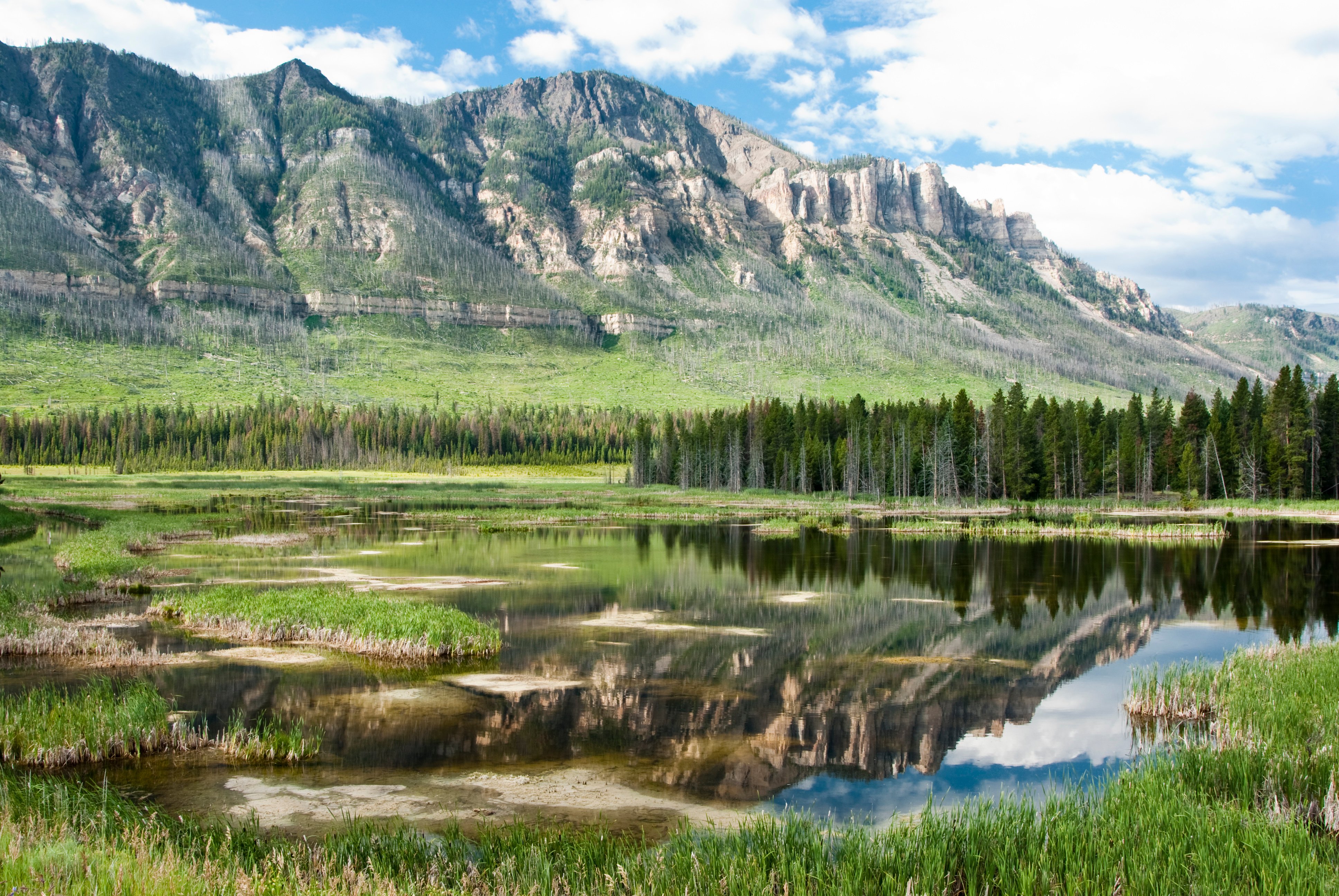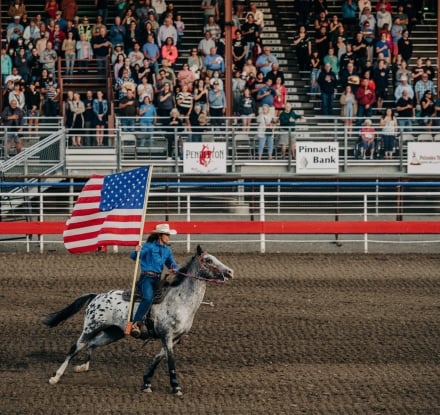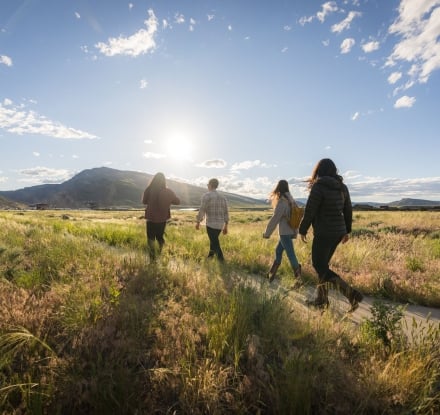
Top 11 Things To See In Yellowstone National Park
Posted on: October 9, 2012
Yellowstone National Park is one of the most popular travel destinations in the world. It’s no wonder. This vast wonderland is home to a plethora of wildlife and geothermal features. Where else in the world can you see a grizzly bear foraging for insects in the morning, a geyser erupting in the afternoon and a wolf howling at sunset? Not to mention the amazing scenery of this corner of the Rocky Mountains. It can be a little overwhelming when planning your trip. So to help with your planning here is Corrie’s Top 11 Things to see when visiting Yellowstone National Park.
- Old Faithful – The most popular sight-seeing spot in Yellowstone should be on your must-see list. It is the most reliable thermal feature in the world. Old Faithful erupts approximately every 91 minutes for a duration of about 2.5 minutes. It is a spectacular site to see! I suggest viewing the eruption from the boardwalk then take the short hike up to the Old Faithful Overlook and watch it from that vantage point. After experiencing Old Faithful, I usually plan to spend about 3 hours walking the geyser basin. There are some really interesting thermal features to see. This brings me to the next item
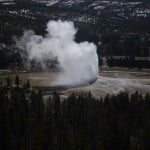
- Morning Glory Pool – This beautiful thermal pool is located at the end of the walking trail in the Upper Geyser Basin. It is a clear, robin’s egg blue color with orange colors on the outer rim. The pool’s shape and color resembles the morning glory flower hence the name. The pool has an interesting past. For years it was “dismantled” by visitors looking for a souvenir while others threw trash, coins, rocks and logs into the pool. All of this vandalism has clogged its vent some and affected the color and temperatur.
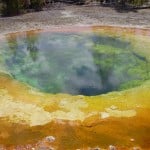
- Grand Prismatic Spring – Six miles north of Old Faithful you will find the Midway Geyser Basin. It is home to one of the largest hot springs in the world. It is 370 feet in diameter with a half mile boardwalk loop that skirts the eastern section of the spring. Heat-loving microorganisms contribute to the colors. The spring has a deep-blue in the middle with green, yellow and orange rings surrounding it giving it a prism effect. The best view of the spring is from overhead. There is a short hike to an overlook on the Fairy Falls Trail just south of the basin.
- Norris Geyser Basin – This interesting geyser basin is the hottest geyser basin in North America because it sits on several fault lines. Temperatures of 459 degrees have been recorded just a thousand feet below the surface. The water is very acidic in this basin due to a high concentration of sulfur. Because of this it is a barren place with few trees. There are two easy walking trails in different parts of the basin. Both take you to a variety of geothermal features. The combined trails are 2 miles round trip and worth it.
- Grand Canyon of the Yellowstone – One of the most colorful and breathtaking spots in the Park is the Grand Canyon of the Yellowstone. The Yellowstone River roars through the canyon for about 20 miles continuing to sculpt the canyon. Two major waterfalls are located in the canyon. There are several great view points of the canyon and falls. Inspiration Point and Artist Point are popular viewing and photography points. If you are feeling a bit more adventurous, be sure to take the half-mile hike down 300 steel grate steps to view the lower fall and get a different perspective of the canyon. Obviously, the hike coming up is more difficult so take advance of the resting spots on the way up and admire the beautiful walls and rock formations in the canyon. The Canyon is spectacular no matter how you choose to view it!
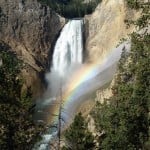
- Tower Fall – Another spectacular waterfall is the Tower Fall in the Roosevelt section of the Park. Volcanic pinnacles above the fall provide a dramatic backdrop. It is a short walk from the Tower Fall General Store to the main viewing point. There is also a half mile hike to the base. This is a steep hike down switchbacks but well worth it. Take the same trail out. Not only is this a beautiful waterfall but it is also a great wildlife viewing area. I have been lucky enough to see mountain goats on the peaks above the fall, an owl nesting in a hollow tree near the main trail and a black bear across the river.
- Lamar Valley – One of the best wildlife viewing areas in the Park is the Lamar Valley. It is known as the “Serengeti of the U.S.” because hundreds of bison roam the river valley in the summer as well as antelope, wolf packs and bears. Two rivers confluence in the valley making it a great grazing spot for wildlife. Wolf watchers set up their spotting scopes and chairs and wait for the opportunity to see a Yellowstone wolf. It is also one of the best fly fishing spots in the Park. It is not unusual to see fisherman in the river with bison grazing nearby. Lamar is also home to some great hiking trails for those wanting to get off the beaten path.
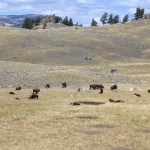
- Petrified Forests – Yellowstone is home to the largest area of petrified trees known to exist. The volcanic activity of the region left deposits of ash and mudflows that buried forests for millions of years. Twenty-seven different forests have been discovered on top of each other in Yellowstone. The Specimen Ridge area has the largest concentration of standing petrified trees. There is no trail to the forest but rangers do lead hikes into the area and maps are available to do it on your own. If you just want to see a petrified tree up close, take the Petrified Tree turn off just past Tower Junction. You can walk right up to the tree and read about its history.
- Yellowstone Lake – Yellowstone is home to the largest high elevation lake in North America. Yellowstone Lake has a surface area of 132 square miles with 141 miles of shoreline. You can drive the northern and western shorelines. Since the lake sits in part of the Yellowstone caldera, there are geothermal features easily accessible. The lake freezes for about half of the year and the temperatures hover around 40 degrees in the summer. If you want to get out on the water, you can take a scenic cruise, kayak tour or fishing excursion.
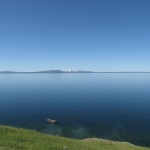
- Hayden Valley – This valley was once part of Yellowstone Lake. The sediments and glacial till left behind do not hold surface water, therefore, trees do not grow. Instead, lush grasses span this valley making it a haven for wildlife. Keep an eye out for bison, elk, wolves, geese, swans, pelicans and other water fowl. Grizzly bears are also known to frequent the area. There are several pull outs to stop and set up a spotting scope. Spotting wildlife is exciting in this beautiful valley.
- Mammoth Hot Springs – The constantly changing hydrothermal features at Mammoth Hot Springs make it a must see each time you visit the Park. This colorful spring deposits about two tons of travertine per day. Some terraces grow by eight inches a year. A boardwalk staircase guides visitors to all the levels of the springs and provides a great overview of the Park headquarters. Be sure to check out the Albright Visitor Center with exhibits and artwork from the early exhibitions in the Park. The center also has a ranger information desk and short films about the Park. It is not uncommon to see bison and elk in the Mammoth area, especially in the fall.
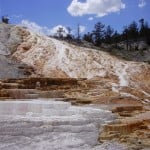 So there you have Corrie’s short list of “must –sees” in Yellowstone National Park. This is only the beginning to exploring the nation’s first and largest national park. I suggest planning to spend several days in the Park or plan several trips during different seasons. Fall is a spectacular time to explore Yellowstone. Hurry, Yellowstone’s visitor season ends November 4th.
So there you have Corrie’s short list of “must –sees” in Yellowstone National Park. This is only the beginning to exploring the nation’s first and largest national park. I suggest planning to spend several days in the Park or plan several trips during different seasons. Fall is a spectacular time to explore Yellowstone. Hurry, Yellowstone’s visitor season ends November 4th.
Until next time, I’ll be lovin’ life in Cody/Yellowstone Country!
Corrie N. Cody


